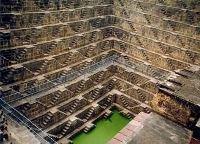India’s Water Husbandry: Design for Change

Considering as a backdrop the intertwined issues of urban development and climate change, this paper establishes a taxonomy of water management systems found in India and charts each system’s capacity for change. Both traditional and current systems are identified in an effort to better understand the varied tools and techniques used for harnessing, regulating, and conserving water in South Asia. Water management systems featured in this paper include the talaab, the ghat, the canal, bunds and tanks, the stepwell, the artificial glacier, the ice stupa, and the snow barrier band. This research draws upon a combination of field study and archival document studies, conducted in India from 2012-2016. As a survey of water management strategies, this paper makes a connection between design practice and water husbandry, acknowledging the need for reference material that could support adaptive design thinking in the face of environmental change.
keywords: Water management, India, infrastructure design, landscape architecture, design for climate change adaptation


Add comment
Log in to post comments